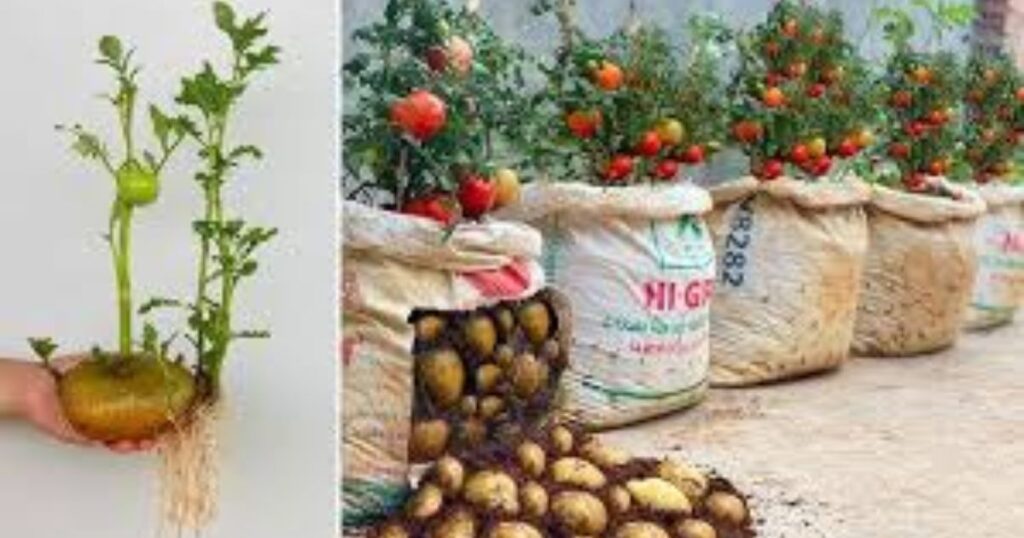How to Grow Hybrid Plants? An Amazing Guide
Hybridization is more than combining two plant species it’s about unlocking nature’s hidden potential to create unique, resilient, and beautiful life forms.
Hybrid plants represent the perfect blend of nature’s creativity and human innovation, offering improved pest resistance, better nutrition, and adaptability to diverse climates.
Learning how to grow hybrid plants allows gardeners to explore both the art and science of plant breeding, cultivating flowers and fruits that stand out for their beauty and strength.
What are Hybrid Plants?
These plants are the fascinating result of controlled crossbreeding between two parent plants, often created to enhance desirable traits such as yield, disease resistance, or aesthetic appeal.
Here are some examples of these plants.
- Pomato
- Plumcots
- Sudachi Yuzu
Pomato
A curious blend of potato and tomato illustrates the remarkable possibilities of hybridization in gardening.

The technique behind creating such hybrids often involves grafting.
Plumcots
A delightful blend of plums and apricots offers an exciting opportunity for gardeners seeking to cultivate hybrid plants with unique flavors.

Sudachi Yuzu
This unique fruit combines the tartness of yuzu with the zestiness of sudachi, offering a flavor profile that elevates anything it touches from dressings to desserts.
As a shining example of hybrid plants, it reflects how nature and science unite to create extraordinary tastes. Gardeners and food enthusiasts alike admire its citrus innovation and exotic flavor fusion, making it a prized gem in modern horticulture.
How Do You Grow a Hybrid Plant?
Growing a hybrid plant involves a mix of art and science, offering opportunities to experiment with unique genetics. A few Tips are given below, Which can be followed.
- Chose Parent Plants
- Identify Male And Female Parts
- Remove The Stamens From The Female Plant
- Collect Pollen
- Cross-Pollination
- Harvest Seeds
- Plant Hybrid Seeds
Chose Parent Plants
The characteristics of the parent plants largely determine the traits of the hybrids you create, making it essential to select them carefully based on your desired outcomes.
Hybrid plants often inherit the best genetic traits, resulting in stronger growth and higher yield. With the right plant breeding techniques, you can develop vibrant hybrids that thrive in diverse gardening environments.
Identify Male And Female Parts
It is a crucial step for anyone looking to grow hybrid varieties. Understanding the reproductive structure helps you control pollination and achieve desired traits in Hybrid plants.
The male part (stamen) produces pollen, while the female part (pistil) receives it, leading to seed formation. By mastering this process, you can create stronger, more productive Hybrid plants that exhibit superior growth and beauty.
Remove The Stamens From The Female Plant
In the delicate dance of plant breeding, mastering the removal of stamens from female plants is a crucial step in creating hybrid plants.
Collect Pollen
It is a vital practice for anyone looking to hybridize plants successfully. It opens a world of potential, allowing you to combine the best traits of different varieties and create unique blooms or fruits.
Cross-Pollination
Cross-pollination is a botanical dance that blends the best traits of two parent plants, giving rise to hybrid vigor.
Harvest Seeds
As you watch your hybrid plants flourish, there comes a moment when the fruits of your labor are ready for consumption but for preservation.
Plant Hybrid Seeds
Hybrid seeds controlled crosses between two different parent varieties, often leading to offspring with superior traits such as enhanced disease resistance, increased yield, and improved overall vigor.
Tips for growing Hybrids
- In the heart of any bloom, the pistil and stamen are fundamental players in the reproductive dance of plants. As you peer into the center, look for those delicate, often slender stalks that set themselves apart with their unique colors.
- When you observe a flower with only a few long, slender stalks protruding from its center, these are likely stamens nature’s male reproductive units.
- The key lies in understanding the unique characteristics of flowering plants. By selecting specimens showcasing buds and blooms, you unlock a treasure trove of genetic potential that can lead to hybrids.
Conclusions
Successfully growing hybrid plants can be a rewarding experience that enhances your garden and gardening skills.
Selecting the right hybrids for your climate, providing appropriate care, experimenting with different hybrid varieties allows you to discover unique traits and flavors that enrich your gardening journey.
Remember to stay patient and observant, as each plant has its growth pattern and requirements.
FAQs
Can Hybrids Occur Naturally?
These occur naturally when two species or subspecies mate and produce offspring.
Are Hybrid Plants Good?
Hybrid plants can be quite beneficial, as they often combine the best traits of their parent species, resulting in improved growth, disease resistance, and higher yields.
How is a hybrid produced?
Hybrid production typically involves crossing two parent plants or animals to create a new variety with desirable traits.





